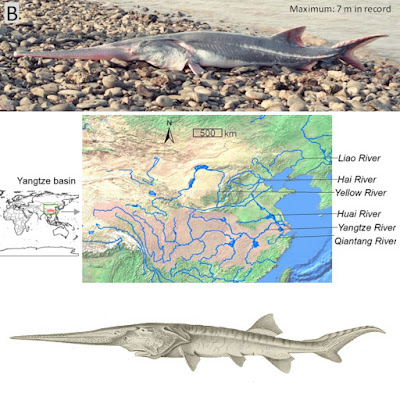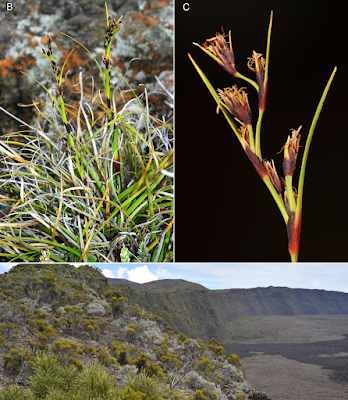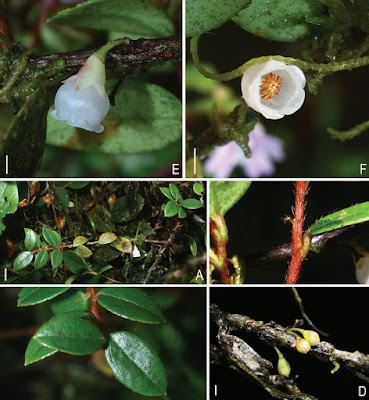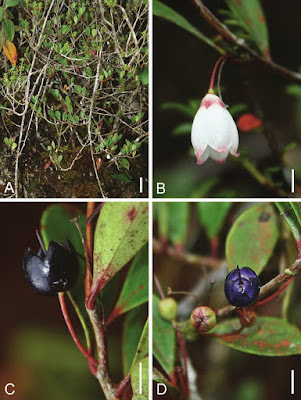[Most Recent Entries] [Calendar View]
Wednesday, December 25th, 2019
| Time | Event | ||||||
| 4:06a | [Ichthyology • 2020] Psephurus gladius • Extinction of One of the World's Largest Freshwater Fishes: Lessons for Conserving the Endangered Yangtze Fauna Highlights: • The giant Chinese paddlefish (up to 7 m in length) was found to be extinct.• The timing of extinction was estimated to be by 2005–2010. • The paddlefish became functionally extinct by 1993, prior to extinction • Conservation efforts on endangered Yangtze fishes are urgently needed. Abstract The mega river ecosystem of the Yangtze River was once home to diverse aquatic megafauna but is increasingly affected by various anthropogenic stressors that have resulted in continuous loss of biodiversity, such as the probable extinction of Yangtze River Dolphin. The Chinese paddlefish, Psephurus gladius, was one of only two extant members of a relict lineage that was most diverse and widespread 34–75 million years ago. It is also one of the largest freshwater fish species, reaching up to 7 m in length. The Chinese paddlefish was once common in the Yangtze River, with c.25 t being harvested per annum during the 1970s. Populations have, however, declined drastically since the late 1970s as a result of overfishing and habitat fragmentation. Here, a basin-wide capture survey during 2017–2018 found 332 fish species, but did not find a single live specimen of Chinese paddlefish. Furthermore, 140 historically reported fish species have not been found and most of them are considered highly endangered. Based on 210 sightings of Chinese paddlefish during the period 1981–2003, we estimated the timing of extinction to be by 2005, and no later than by 2010. In addition, the paddlefish probably became functionally extinct (i.e. it was unable to reproduce) by 1993, before it went extinct. It is likely that the lack of reproduction was among the major causes of extinction. As no live specimens exist in captivity, and no living tissues are conserved for potential resurrection, the fish should be considered extinct according to the IUCN Red List criteria. The delayed extinction of Chinese paddlefish resulted from multiple threats, suggesting that optimizing conservation efforts on endangered Yangtze fauna is urgently needed. Keywords: Chinese paddlefish, Endangered fish, Sighting record, Functional extinction, Extinction debt, Yangtze River Hui Zhang, Ivan Jarić, David L. Roberts, Yongfeng He, Hao Du, Jinming Wu, Chengyou Wang and Qiwei Wei. 2020. Extinction of One of the World's Largest Freshwater Fishes: Lessons for Conserving the Endangered Yangtze Fauna. Science of The Total Environment. In Press. DOI: 10.1016/j.scitotenv.2019.136242 | ||||||
| 6:07a | [Botany • 2019] Revision of the Afro-Madagascan Genus Costularia (Cyperaceae: Schoeneae): Infrageneric Relationships and Species Delimitation
Abstract A recent molecular phylogenetic study revealed four distinct evolutionary lineages in the genus Costularia s.l. (Schoeneae, Cyperaceae, Poales). Two lineages are part of the Oreobolus clade of tribe Schoeneae: the first being a much-reduced genus Costularia s.s., and the second a lineage endemic to New Caledonia for which a new genus Chamaedendron was erected. The other two lineages were shown to be part of the Tricostularia clade of tribe Schoeneae. Based on morphological and molecular data, the genus Costularia is here redelimited to represent a monophyletic entity including 15 species, which is restricted in distribution to southeastern Africa (Malawi, Mozambique, South Africa, Swaziland, Zimbabwe), Madagascar, the Mascarenes (La Réunion, Mauritius), and the Seychelles (Mahé). Molecular phylogenetic data based on two nuclear markers (ETS, ITS) and a chloroplast marker (trnL-F) resolve the studied taxa as monophyletic where multiple accessions could be included (except for Costularia laxa and Costularia purpurea, which are now considered conspecific), and indicate that the genus dispersed once to Africa, twice to the Mascarenes, and once to the Seychelles. Two endemic species from Madagascar are here described and illustrated as new to science, as is one additional species endemic to La Réunion. Two taxa previously accepted as varieties of Costularia pantopoda are here recognised at species level (Costularia baronii and Costularia robusta). We provide a taxonomic revision including an identification key, species descriptions and illustrations, distribution maps and assessments of conservation status for all species. Conclusions: The genus Costularia is redelimited to represent a monophyletic entity including 15 species. Although the species diversity is largely found in Madagascar, our results indicate that the genus dispersed once to Africa (Malawi, Mozambique, South Africa, Swaziland, Zimbabwe), twice to the Mascarenes (La Réunion, Mauritius), and once to the Seychelles (Mahé). Three-quarters of the species are threatened with extinction, because of restricted distribution ranges and human impact. A full taxonomic treatment is provided, including an identification key to all species, formal descriptions of two new species from Madagascar (Costularia andringitrensis and Costularia itremoensis) and one new species from La Réunion (Costularia cadetii), and two taxa previously recognised as varieties of Costularia pantopoda are here recognised at species level (Costularia baronii and Costularia robusta). Isabel Larridon, Linah Rabarivola, Martin Xanthos and A. Muthama Muasya. 2019. Revision of the Afro-Madagascan Genus Costularia (Schoeneae, Cyperaceae): Infrageneric Relationships and Species Delimitation. PeerJ. 7:e6528. DOI: 10.7717/peerj.6528 Top 10 species discovered in 2019 Our scientists have once again been busy identifying and describing new plant and fungal species. | ||||||
| 6:09a | [Botany • 2019] Ericaceae of Sulawesi: A New Species of Diplycosia, A New Variety of Vaccinium paludicolum and One Rediscovery
Abstract Diplycosia jiewhoei Mustaqim and Vaccinium paludicolum var. hirsutulum Mustaqim are described as new taxa. Diplycosia retusa has been rediscovered after a lapse of 116 years and is here illustrated with photographs, and the first description of the fruits of this species is presented. Keywords: Diplycosia, Ericaceae, new species, taxonomy, Vaccinium, Wallacea
Diplycosia jiewhoei Mustaqim, sp. nov. Diagnosis: Similar to Diplycosia elliptica Ridl. (northern Sumatra, Peninsular Malaya and Borneo) but differing in having leaves with a protruding apical gland (vs minute), longer pedicels (c. 4 mm vs 1(–2) mm long), an urceolate-subglobose corolla (vs short-cylindric or subcampanulate), oblong anthers (vs sagittate) and shorter tubules (0.3 mm vs 1 mm long). Type: INDONESIA: Central Sulawesi: Poso Regency: Tentena-Bada road divide, 1 Aug 2018, WH Ardi 258 (holotype: BO!; isotypes: CEB!, SING!). Etymology: Named after Tan Jiew Hoe, the Singaporean philantropist and plant enthusiast who supports many botanical explorations including the one on which this species was collected.
The rediscovery of Diplycosia retusa Diplycosia retusa Sleumer, Bot. Jahrb. 71: 156 (1940). Distribution: Endemic to Central Sulawesi. Habitat and ecology: Terrestrial in upper montane vegetation on quartzite soil, 1300 to 1700 m. Wendy A. Mustaqim and Wisnu H. Ardi. 2019. Ericaceae of Sulawesi: A New Species of Diplycosia, A New Variety of Vaccinium paludicolum and One Rediscovery. Telopea: Journal of Plant Systematics. 22; 193-204. DOI: 10.7751/telopea13168 Abstrak: (Bahasa Indonesia) Diplycosia jiewhoei Mustaqim and Vaccinium paludicolum var. hirsutulum Mustaqim dipertelakan sebagai takson-takson baru. Diplycosia retusa telah ditemukan kembali setelah jeda 116 tahun dan foto beserta pertelaan pertama lengkap dengan buah untuk jenis ini disajikan. Kata kunci: Diplycosia, Ericaceae, jenis baru, taksonomi, Vaccinium, Wallacea | ||||||
| 9:00a | [Ichthyology • 2019] Tyttobrycon shibattai • On A Remarkable Sexual Dimorphic Trait in the Characiformes related to the Olfactory Organ and Description of A New Miniature Species of Tyttobrycon Géry (Characiformes: Characidae)
Abstract Among the order Characiformes, secondary sexual dimorphism is commonly associated to the occurrence of bony hooks on fins, shape and length of the dorsal and anal fins, and sexual dichromatism. The analysis of a new miniature Characidae species of the genus Tyttobrycon, described herein, yielded to the discovery of a sexually dimorphic trait related to nostril aperture and number of olfactory lamellae. In this type of dimorphism, mature males present larger nostril aperture and higher number of olfactory lamella than females. A dimorphic olfactory organ is for the first time recorded and described for a member of the Characiformes. Gross morphology and development of brain and peripheral olfactory organ of Tyttobrycon sp. n. are described and compared to other species of Characidae. It is hypothesized that such dimorphic trait is related to male-male detection during cohort competition in small characids. The new species of Tyttobrycon is diagnosed from its congeners by the number of branched anal-fin rays (19–21) and the absence of a caudal-peduncle blotch. It occurs in a small tributary of Rio Madeira basin, near to the limit between Brazil and Bolivia, Acre State, Brazil. Tyttobrycon shibattai, sp. nov. Diagnosis: Tyttobrycon shibattai can be distinguished from all congeners, except T. spinosus, by having 19–21 branched anal-fin rays (vs. up to 17). It can be diagnosed from T. spinosus by lacking a caudal-peduncle blotch (vs. blotch present). Additionally, it is further distinguished from all species, except T. dorsimaculatus, by the presence of both tricuspid and conical teeth on premaxilla and dentary (vs. teeth exclusively conical). It is distinguished from T. dorsimaculatus by having hyaline dorsal-fin, with few scattered melanophores (vs. dorsal fin with a conspicuous dark blotch) and by the presence of a parallel line of subjacent melanophores dorsal to anal-fin base (vs. melanophore line absent).
Geographical distribution: Tyttobrycon shibattai is only known from its type locality at Rio Iná, a tributary of Rio Abunã, near to the limit between Brazil and Bolivia, Rio Madeira drainage, Rio Amazonas basin, Acre State, Brazil (Fig 7). Ecological notes: Specimens of Tyttobrycon shibattai were collected in lentic habitats in the Rio Iná (Fig 8). The type locality was relatively shallow, with its deepest portion reaching 60 cm, and exhibiting a muddy-brown water. The river bottom was composed of clay and sand. Water physicochemical parameters during samples was 30.5°C, 6.3 mg/L of O2 dissolved, pH 6.31, and 62.1 conductivity microSiemens (uS)/cm. The only syntopic species collected with Tyttobrycon shibattai was Tridentopsis sp., which was abundant in the area. Stomach contents of two adults containing mostly sediments, plant and algae debris, and some autochthonous invertebrates with predominance of ostracods. The stomach content of one juvenile specimen presented mostly plant and algae debris. Etymology: The specific name honors O. A. Shibatta, a renowned icththyologist from Universidade Estadual de Londrina-MZUEL, for his great contributions to the systematic of fishes and support to new generations of ichthyologists. This honor is also dedicated to the vast influence and importance on the early ichthyological formation of the leading author of this paper (VPA). Shibatta was responsible for encouraging his studies with nervous system of Neotropical fishes. Vitor Pimenta Abrahão, Murilo Pastana and Manoela Marinho. 2019. On A Remarkable Sexual Dimorphic Trait in the Characiformes related to the Olfactory Organ and Description of A New Miniature Species of Tyttobrycon Géry (Characiformes: Characidae). PLoS ONE. 14(12): e0226130. DOI: 10.1371/journal.pone.0226130 |
| << Previous Day |
2019/12/25 [Calendar] |
Next Day >> |












